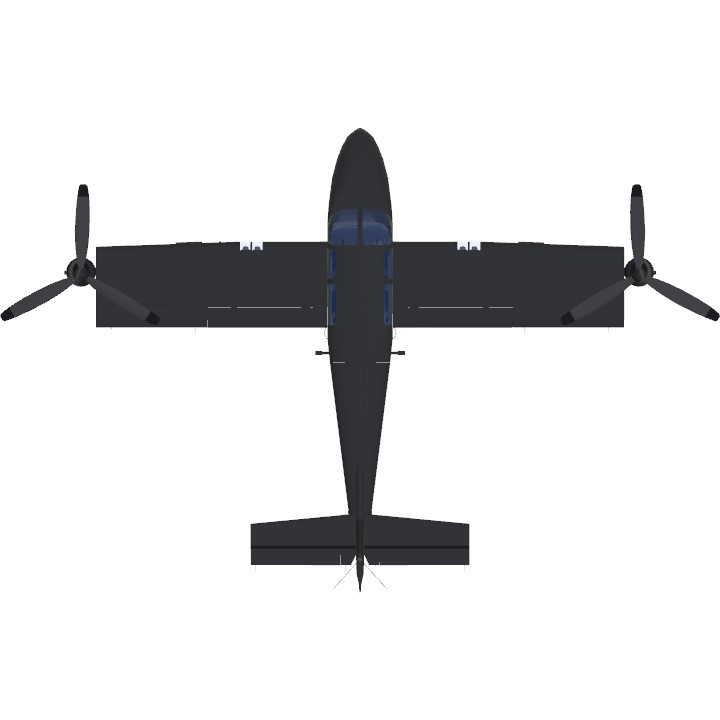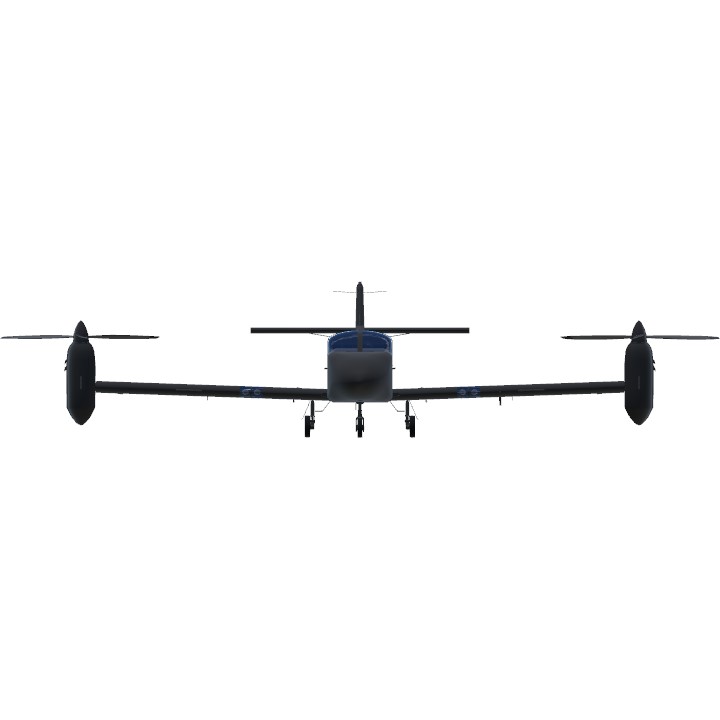Special Mentions:
Big thanks to @Dastin for helping with me with the coding for the landing gear lights on the instrument panel.
The name 'Cherosprey' comes from @ThomasRoderick, so credit for the name goes to them.
History:
When the original AP-29 was brought to the market in 2015, Lightning Aircraft industries had already started working on a more improved version.
So, after many hours of examining, thinking and designing, the new version of the AP-29 arrived in 2017 and was renamed as the AP-29VL, with VL standing for VTOL.
Just like the original, the AP-29VL was still loosely inspired by the PA-28, which was quite clear in its design. This was because LAI wanted to make the aircraft fairly familiar to pilots who would have flown in PA-28's or other such aircraft many times before. This also extended to the instrument panel and its layout, having a similar instrument and control layout to the PA-28.
In terms of changes, the most prevalent ones were the landing gear, VTOL control system, flaps and engines.
First, the Landing gear was changed to a retractable version to help reduce drag and allow for some faster speed.
Next, the VTOL control system was improved to be even more reliable, but also simple. A powerful air compressor was added to the tail just behind the cabin and was linked to air nozzles on the wings and fuselage to control bank angle, yaw and pitch whilst in vertical flight.
One stage flaps were added to the inside of the wing too to act sort of like an air brake to help slow the aircraft down for a vertical landing or takeoff.
The engines, being custom made for the aircraft, were more powerful and had slightly larger props fixed to them to get some more speed out of the aircraft and compensate for the extra weight, even though the airframe was made to be as light as realistically possible.
Other changes included using the same radios as the PA-28's and a new digital display that showed the radio altitude above ground level and the rotation of the engine nacelles.
Unlike the original, the AP-29VL was actually given a name, one that originated from pilots. Since the design was inspired by the PA-28 Cherokee and had tilt-rotor engines, pilots decided to take the name of the V-22 Osprey and combine it with the name of the PA-28 Cherokee, resulting in the name 'Cherosprey'.
LAI took notice of this during development of the VL version and decided to name the new version 'Cherosprey'.
As of current, the AP-29VL is still in production (the original is in limited production) and so far, 10,000 have been produced. There haven't been any major accidents with the type either.
Controls:
AG-1: None
AG-2: Flaps
AG-3: Landing Lights
AG-4: Navigation Lights
AG-5: Gyroscopic Autopilot
AG-6: Emergency Parachute
AG-7: VTOL mode [VTOL mode lights turn on when AG-7 is on and nacelles are directly facing up]
AG-8 (Off): Fuel cutoff, disable Electrics and Avionics
[Parking brake controlled by switch in the cockpit below the throttle quadrant.]
[All AG's can be controlled from the cockpit.]
VTOL [Up]: Move nacelles down
Trim: Trim
Specifications:
Maximum speed: 141 mph TAS (Sea level)
Maximum service ceiling: 14,500 feet ASL
Optimal Climb Rate: 1,942 ft/min
Rotate (Takeoff) Speed [Normal takeoff]: 65 mph TAS
Approach Speed: 100-104 mph TAS
Landing Speed: 72 mph TAS
Fuel Load: 240 Imperial Gallons
Powerplant: 2 x LAI BV-28K piston engine [Linked together]
Pictures:







NOTAMS:
- Be careful when using turning on the ground at speed.
- When taking off normally, gradually increase the power. Don't go to 100% throttle instantly.
As you can probably tell from the first picture in the description,AP-29
this is a remake of my,
which just so happens to my most successful build to date
(Edit: It used to be).- There is a slight auto-roll problem which I couldn't manage to fix.
- The gear indicator lights sometimes go out of sync with the actual landing gear, for your information.
- I may follow this build up with other liveries or possible variants in the future.
- This is my first time trying to use fuselage cutting to create the wings, so they can be improved upon in later builds. I did also try experimenting with Label riveting too.
Specifications
Spotlights
- PlaneFlightX 3.4 years ago
- Dimkal 3.3 years ago
- DerVito 3.4 years ago
- UnguidedCylinder 3.0 years ago
- KudaOni 3.4 years ago
- RicardoACE 3.4 years ago
- Dastin 3.4 years ago
- Shimamurahougetsu 3.4 years ago
- PyrrhaNikos 3.4 years ago
General Characteristics
- Successors 1 airplane(s)
- Created On Windows
- Wingspan 37.1ft (11.3m)
- Length 23.9ft (7.3m)
- Height 8.0ft (2.4m)
- Empty Weight 324lbs (147kg)
- Loaded Weight 1,937lbs (878kg)
Performance
- Horse Power/Weight Ratio 0.206
- Wing Loading 7.1lbs/ft2 (34.5kg/m2)
- Wing Area 274.1ft2 (25.5m2)
- Drag Points 1190
Parts
- Number of Parts 856
- Control Surfaces 5
- Performance Cost 3,253





@Darkspoul
👍
I haven't even flown this yet but it looks like a great plane. Can't wait to try it out!!
@Liquidfox01
Thank you.
Beautiful aircraft a very nice remaster
@Star737
Thanks
Nice build
@parkrangerjerry
Lol, thanks.
i was like "OMG ENGINES ON WING TIPS???? SO UGLYYYY"
until i saw the pictures
is good plane
This is what I see in my nightmares. Good plane.
@Viper_Z3R0
Thanks
Thought it was a regular plane til i saw it was VTOL. I like it
Ok I find it out that this is not really appear in real life
Does this aircraft appear in real life ?
@FeatherWing well its more dedication than my attempts. most planes i make i spend maybe an hour and then say its finished and start on a new model
@teodor99
Thank you. Spent over a year on this build actually. Surprised myself by that.
i must admit. you have improved extremely well with your planes. absolutely amazing.
@Dastin
Thank you.
Beautiful plane, really well done overall. Looking forward to your next build.
@Dastin
@ThomasRoderick
(People who were credited.)